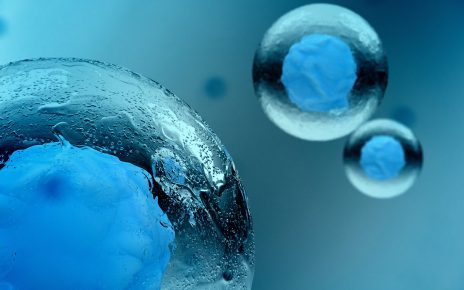In spite of its unsavory reputation, dirt smells good. Open a bag of potting mix or dig a hole in your yard and inhale: the scent is unmistakable and oddly refreshing. It’s close kin to the smell of caves, or of petrichor, the aroma of rain after a long dry spell.
One of the most exciting and unexpected discoveries I made in college occurred the day I opened a Petri dish of soil bacteria. There was no soil in the plate — just opaque patches of bacteria called colonies — but it smelled just like a cave. I had discovered that dirt doesn’t actually smell like dirt. It smells like bacteria.
Two of the chemicals responsible for that earthy perfume are geosmin and 2-methylisoborneol (2-MIB). Geosmin is made by many organisms — including, unsurprisingly, beets — but particularly by bacteria in the genus Streptomyces.
Streptomyces permeate soil and are the source of more than two-thirds of our naturally-derived antibiotics. That’s probably because these bacteria must battle for resources with so many other microbes in the dirt jungle. Any given Streptomyces can produce dozens of unusual chemicals, but any particular chemical is usually made by only a few. On the other hand, almost every species of Streptomyces manufactures geosmin, and about 50% make 2-MIB.
Yet even though scientists knew where that smell was coming from, they didn’t know the answer to another basic question: why make it? A team of British, Hungarian, and Swedish scientists investigated this question recently, publishing their findings this month in Nature Microbiology.
The natural history of these bacteria contains a clue. Streptomyces, amazingly for bacteria, behave like fungi. Fungi grow as a mass of branched filaments called mycelium that often sprouts individual reproductive cells called spores. In spite of the bacterial reputation for making tiny individual cells, Streptomyces does this too. It’s a case of convergent evolution, just as bats resemble birds and whales resemble fish.
Streptomyces’s mycelia can sometimes reach a few centimeters in size and often sprout chains or whorls of spores in a variety of interesting and sometimes complex configurations. But because they live immersed in dirt, dispersing those spores is difficult. Wind and water are unpredictable and unlikely to get you very far. The remaining options comprise miscellaneous creepy crawlies.
So the scientists put two and two together: is geosmin the bacterial equivalent of the smell of ripe fruit?
To answer that question, they built tiny traps baited with Streptomyces bacteria, placed them in the field and waited. What showed up in those traps relative to unbaited control traps were springtails.
Springtails are omnivores that feed on a wide array of microbes and plant parts. They are also abundant in the top layer of soil where Streptomyces live. These adorable little creatures are so named because they often have a forked butt flipper called a furcula that launches them skyward in emergencies. For the most adorable and enlightening video introduction to springtails ever, please see David Attenborough’s two-minute take.
The scientists investigated whether springtails can smell dirt smells by checking for an electrical response in their antennae to the relevant odors. Geosmin and 2-MIB both elicited such responses.
Would Streptomyces spores stick to springtails? The bodies of springtails are covered in extremely hydrophobic wax, meaning they repel water and most bacteria. However, Streptomyces spores are also covered in hydrophobic sheaths, which means at least theoretically that they would not be repelled by springtail body armor.
When the scientists unleashed springtails on Streptomyces colonies covered in or devoid of spores, only the springtails that had wallowed in spores produced new Streptomyces when they were bathed and their bathwater was plated on a Petri dish containing bacteria chow. The bathwater of springtails that had spent time in plates of Streptomyces incapable of making spores produced barely any new growth. But that’s not the only way that springtails could disperse spores.
What’s in it for the springtails? In spite of what I consider to be its nice smell, Streptomyces has a reputation for making food taste disgusting to both humans and fruit flies. Both species interpret it as a sign of spoilage (all the weird chemicals Streptomyces make are probably dangerous too).
Springtails in this experiment, on the other hand, both survived and thrived on a diet of nothing but Streptomyces mycelium. So the scientists wondered if their spores would survive a one-way trip through a springtail. Lo, live Streptomyces spores emerged from the backsides of springtails.
Streptomyces appear to be using springtails the way strawberries use birds. Dirt smells good — and like bacteria — because bacteria are bribing animals to do the dirty work of spreading them around.
Reference
Becher, Paul G., Vasiliki Verschut, Maureen J. Bibb, Matthew J. Bush, Béla P. Molnár, Elisabeth Barane, Mahmoud M. Al-Bassam et al. “Developmentally regulated volatiles geosmin and 2-methylisoborneol attract a soil arthropod to Streptomyces bacteria promoting spore dispersal.” Nature Microbiology (2020): 1-9.



